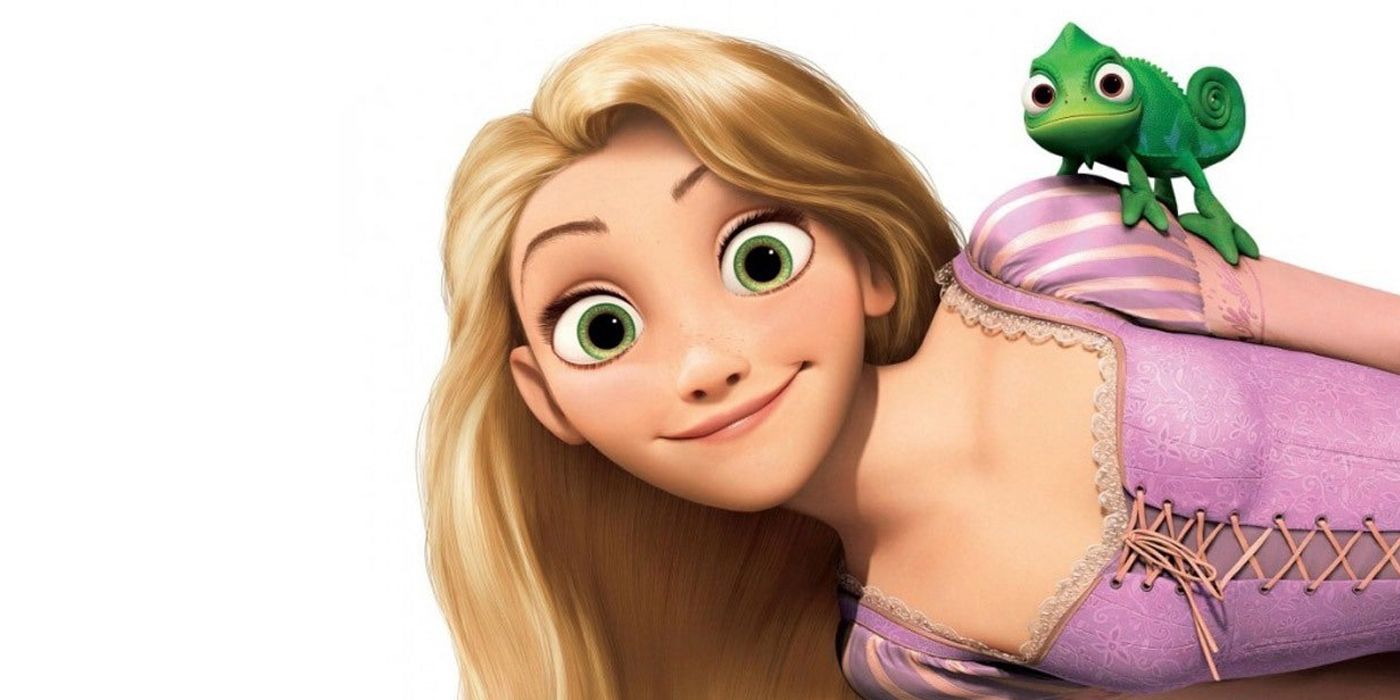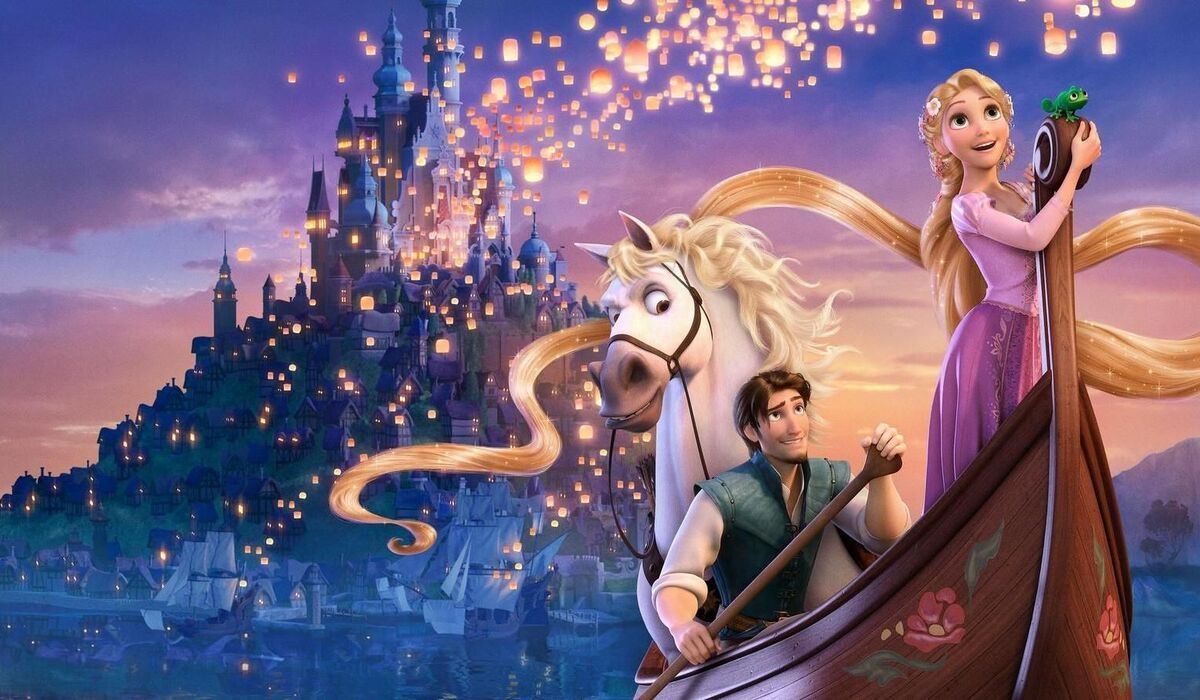A full decade after its initial release, Disney’s Tangled still remains the most expensive animated film of all time. It’s not by an insignificant margin, either; clocking in at a $260 million budget (not adjusted for inflation), according to Box Office Mojo, Tangled beats out the runner-up, 2019's remake of The Lion King, by a cool $10 million. From there, the film lords over the rest of the 10 most expensive animated movies of all time (all courtesy of Pixar, interestingly) by at least $60 million more. So just how did Disney Animation Studios' reinterpretation of the story of Rapunzel end up costing so dang much?
The simple answer is rewrites, and lots of them. An adaptation of the Brothers Grimms’ classic fairy tale had been in the works as early as 1996, according to animation supervisor Glen Keane. By 2001, Keane pitched Rapunzel to Michael Eisner, Disney’s then-president. The studio committed to developing the film full time in 2002 under the new title, Rapunzel Unbraided. At the time, it was imagined as a tongue-in-cheek, sardonic story in the vein of Shrek. Though it continued development over the course of three years, eventually Keane reworked the script again with a more genuine and sincere tone.
Keane also confessed the team spent an immense amount of time and effort on animating Rapunzel’s hair in the new medium of computer animation. "There’s 140,000 individual hairs and hair is the hardest thing to animate in a computer," Keane explained. "It’s made up of pixels that bounce against each other. We’ve been solving artistic problems with mathematics for six years on this film just trying to establish control. We broke it down to 147 different tubes each with a thousand hairs in it. The hair was the most complex character we had in the film."
Work on Tangled would be rebooted yet again with a completely clean slate when John Lasseter and Ed Catmull took charge of the studio in 2006. In Catmull’s own words, all that remained from previous drafts was "the hair, the tower and Rapunzel." This latest revamp aimed for a more contemporary feel, one that spun the Disney Princess brand in a new, more openly comedic direction.
Stressed out from his personal lack of experience in computer animation and his long-running management of the film, Keane resigned from directing the project following a heart attack in 2008, alongside his co-director, Dean Wellins. Byron Howard, after wrapping production on Bolt, stepped up to direct with Nathan Greno, and from there on out, Tangled's journey from script to screen went relatively smoothly. Meanwhile, Keane remained onboard as an executive producer.
Tangled opened to rave critical and commercial success, though it wouldn’t ultimately recoup its costs directly from box-office earnings. With a massive gross of just over $592 million, the film’s earnings still weren't especially noteworthy relative to its budget (factoring in marketing and other costs, movies the size of Tangled usually must make twice their budget at the box office just to break even).
Still, Tangled ushered in a new wave of Disney Princess films, all animated with cutting-edge CGI. Frozen smashed box-office records only three years later, shortly followed by the cultural landmark Moana. With Frozen II gobbling up the box office yet again only last year, it’s safe to say there’s likely more Princess films to come, and it’s Tangled that's to be thanked.


